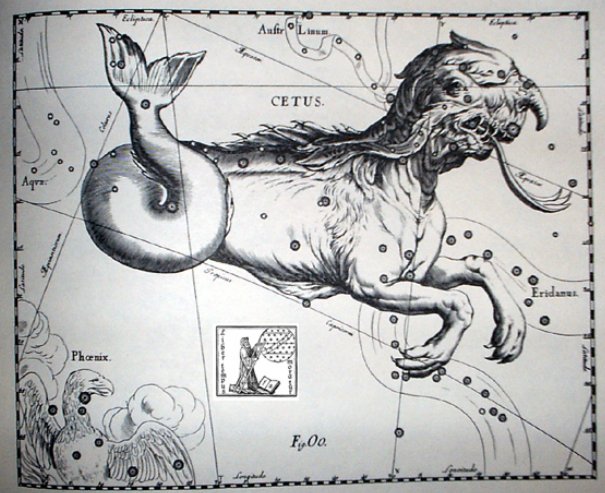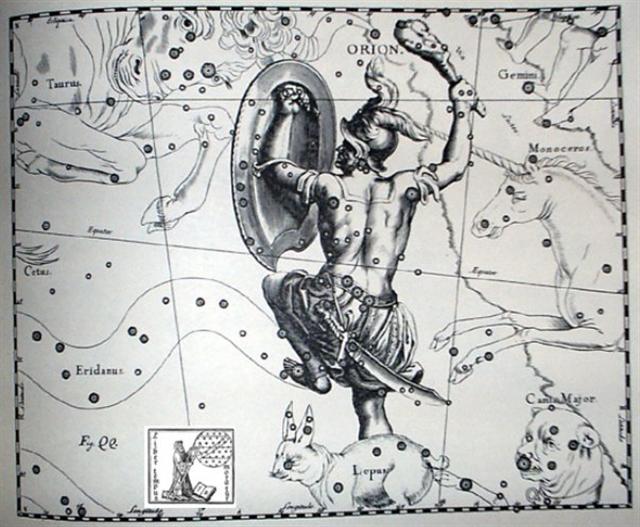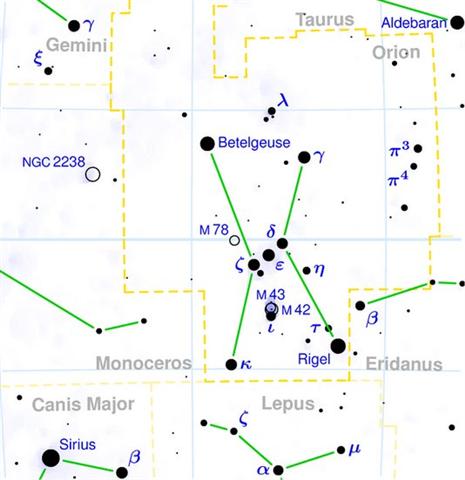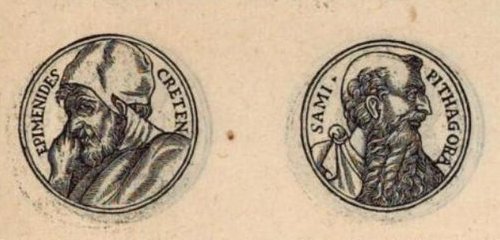13-7. The circuit of Lono (Rogo)
on Hawaii began 10 days after
November 18, which ought to point at Eb2-11, i.e. 10 glyphs
after Eb2-1:
|
 |
 |
 |
 |
 |
 |
 |
|
Eb2-1 |
Eb2-2 |
(326 + 45 = 371) |
Eb2-4 |
Eb2-5 |
Eb2-6 (48) |
Eb2-7 |
|
te maitaki - te maro |
hakanohoa |
e ariki |
te tapamea |
te henua - tau rakau |
no ana ra tau hiva |
ko rapai a haga |
|
VISIBLE CLOSE TO
THE FULL MOON: |
|
λ Tauri (59.3), ν Tauri (59.9) |
4h
(60.9)
JĪSHUĬ
= λ Persei
(60.7)
COR CAROLI (α Canum Ven.) |
υ Persei (61.2) |
BEID (Egg) =
ο¹
Eridani
(62.2),
μ
Persei (62.8)
VINDEMIATRIX ( ε Virginis) |
Al Dabarān-2 (The Follower)
HYADUM I =
γ
Tauri (63.4)
*22.0 = *63.4 -
*41.4 |
HYADUM II = δ¹ Tauri
(64.2) |
Net-19 (Crow)
AIN (Eye) =
ε
Tauri,
θ¹
Tauri,
θ²
Tauri (65.7) |
|
May 19 |
20 |
21 (141) |
22 |
23 |
24 |
25 |
|
THE SUN: |
|
Nov 18 |
19 |
20 |
21 |
22 |
23 |
24 (*248) |
|
υ
Herculis (242.3),
ρ
Cor. Borealis (242.4),
ι
Cor. Borealis (242.5),
θ
Draconis (242.6),
ξ
Scorpii (242.7)
SCHEDIR
(Breast) α Cassiopeiae
*201.0 = *242.4 - *41.4 |
16h (243.5)
ACRAB (Scorpion) =
β
Scorpii,
JABHAT AL ACRAB (Forehead of the Scorpion) =
ω
Scorpii
(243.3),
θ
Lupi,
RUTILICUS =
β
Herculis
(243.5),
MARFIK (Elbow) =
κ
Herculis
(243.7),
φ
Herculis (243.8) |
ψ
Scorpii (244.6),
LESATH (Sting) =
ν
Scorpii
(244.8) |
χ
Scorpii (245.1),
YED PRIOR (Hand in Front) =
δ
Ophiuchi,
δ
Tr.
Austr. (245.5) |
YED POSTERIOR (Hand Behind) =
ε
Ophiuchi,
RUKBALGETHI SHEMALI (Northern Knee of the Giant) =
τ
Herculis
(246.6).
δ
Apodis (246.7),
ο
Scorpii (246.8) |
Heart-5 (Fox)
σ
Scorpii
(247.0),
HEJIAN =
γ
Herculis
(247.2),
ψ
Ophiuchi (247.7) |
ρ
Ophiuchi (248.1),
KAJAM (Club) =
ω
Herculis
(248.3),
χ
Ophiuchi (248.5),
SHE LOW (Market Tower) =
υ
Ophiuchi,
Tr.
Austr. (248.7), ζ Tr. Austr. (248.8) |
|
... The correspondence between the winter solstice
and the kali'i rite of the Makahiki is
arrived at as follows: ideally, the second ceremony
of 'breaking the coconut', when the priests assemble
at the temple to spot the rising of the Pleiades,
coincides with the full moon (Hua
tapu) of the twelfth lunar month (Welehu). In
the latter eighteenth century, the Pleiades appear
at sunset on 18 November. Ten days later (28
November), the Lono effigy sets off on its
circuit, which lasts twenty-three days, thus
bringing the god back for the climactic battle with
the king on 21 December, the solstice (= Hawaiian 16
Makali'i). The correspondence is 'ideal' and
only rarely achieved, since it depends on the
coincidence of the full moon and the crepuscular
rising of the Pleiades ... |
Eb2-11 reveals this place
could refer to the day after the Julian spring equinox. And 54
weeks (Eb2-12) = 378 days suggests the synodic cycle of Saturn
(Eb2-10) = 326 + 52.
|
Nov 25 |
26 (*250) |
27 |
28 (332) |
29 |
30 |
Dec 1 (335) |
|
EQUINOX |
SEPT 23 |
24 |
25 |
26 |
27 |
28 |
|
 |
 |
 |
 |
 |
 |
 |
|
Eb2-8 |
Eb2-9 |
Eb2-10 (378) |
Eb2-11 |
Eb2-12 (54) |
Eb2-13 |
Eb2-14 |
|
a matiro - ko hiti |
noho maitaki |
koira taua |
ko pe ko tae |
te rima |
tagata oho - ki moto vaero tae |
kiore - o te henua |
|
Tiro. Mgv.: Spots on linen. Ta.:
tiro, to mark. Mq.: tiotioa,
blotched, covered with white spots. Titiro,
to admire. P Ma.: tiro, to gaze at.
Churchill. Vi.: tiro, siro,
sisiro, to descend, to go down a steep or
hill. Churchill 2.
Hiti. 1. To show itself
again, to reappear (of the new moon, of a
constellation - meaning uncertain). 2. Said of
thin, tough-fleshed fish of indifferent taste:
ika hiti. 3. Said of fish when they come
to the stones of the shore for insects among the
seaweed: he hiti te ika. 4. To reproach
someone for his ingratitude. Vanaga. 1. To rise,
to appear, to dawn; hitihaga, rising;
hitihaga roa, sunrise; hitihiti, to
dawn; horau hitihiti, break of day;
hakahiti ki te eeve, to show the buttocks.
2. Puffed; gutu hiti, thick lips.
Churchill.
Tou. In ancient times, a
tou was someone who had recovered from an
epidemic, but whose illness meant that someone
else in the family had to die. The tou
were regarded as portents of evil. Toutou,
lush; fertile (land). Toûa: Egg yolk;
the colour yellow; soft, fibrous part of tree
bark; toûa mahute, mahute fibres. Vanaga.
Toua: Wrath, anger, rage, revenge,
battle, combat, debate, dispute, dissension,
uprising, revolt, quarrel, fight, hostility (taua);
toua rae, to provoke, rae toua, to
open hostilities, toua kakai, to rebuke,
tuki toua, to stir up dissension;
totoua, hostility; hakatoua, fighter,
warrior. P Mgv.: toua, war, battle. Mq.:
toua, war, dispute, quarrel. The form
with o is found only in these three
languages, taua is found in the general
migration, Rapanui is the only speech which has
both. Toutou, fertile (tautau);
hakatoutou, to fertilize. Mq.: taútaú,
fertile. Toùvae, to run; hakauruuru
toùvae, id. Churchill.
Pe.
1. Like, as. PS Mgv.:
pe,
as, the same as, also. Sa.:
pei,
like, as. Niuē:
pehe,
thus. 2. And, also (in numerals);
e rua
te
hagahuru pe aha,
twenty-four. PS Sa.:
pe,
a restrictive particle in counting, only. To.:
be,
only. Uvea:
pe,
id. Churchill.
Pau.: Spoilt,
damaged. Mgv.:
pee,
macerated, spoilt. Ta.:
pe,
spoilt, rotten. Mq.:
pe,
id. Sa.:
pe,
id. Ma.:
pe,
pulpy, purulent. Churchill.
Tae. 1. Negation used in
conditional and temporal clauses: ana ta'e
hoa te ûa, ina he vai, when it does not
rain, there is no water. Also used with some
verbal forms such as: o te aha koe i-ta'e-oho
mai-ai? why didn't you come? Otherwise its
use is limited to adjectives or verbal
adjectives: tagata ta'e hupehupe, person
who is not weak, hard worker; nohoga ta'e
oti, endless existence, eternity. 2.
Interjection expressing admiration, always used
with he: ta'e he tagata! what a
man! Ta'e he aga! what a great job!
Ta'e he tagata koe mo keukeu i te henua!
what a good farmer you are! Vanaga. 1.
Prepositive negative: without, not, none. PS
To.: tae, prepositive negative. 2. To
remain; tae atu ki, as far as, until.
Taehaga (tae 1), to shake the head in
sign of negation, reluctant, to disdain, to be
displeased. 3. Pau.: tae, to arrive.
Mgv.: tae, id. Ta.: tae, id. Ma.:
tae, id. 4. Pau.: taetae,
elephantiasis in scroto. Ta.: taetae,
ill, illness. Churchill. |
|
Al Kalb-16 (The Heart) /
Jyeshtha-18 (Eldest) /
ANA-MUA-1 (Entrance
pillar)
ANTARES = α Scorpii
(249.1),
MARFIK (Elbow) = λ Ophiuchi,
φ Ophiuchi (249.5), ω Ophiuchi (249.8) |
γ Apodis (250.1), σ Herculis (250.3), θ Tr.
Austr. (250.6), τ Scorpii (250.7) |
HAN = ζ Ophiuchi
(251.0) |
ζ
Herculis,
η
Tr. Austr.
(252.1), η Herculis, β Apodis (252.5) |
ATRIA = α Tr. Austr.
(253.9) |
Tail-6
(Tiger)
WEI (Tail) = ε Scorpii,
η Arae (254.3),
DENEBAKRAB = μ Scorpii
(254.7) |
ι Ophiuchi (255.3),
GRAFIAS = ζ Scorpii (255.4)
*214.0 = *255.4 - *41.4 |
|
VISIBLE CLOSE
TO THE FULL MOON: |
|
No star listed (66) |
No star listed (67) |
Rohini-4 (The Red One)
/
Pidnu-sha-Shame-4 (Furrow
of Heaven)
/
ANA-MURI-2 (Rear pillar - at the foot of which
was the place for tattooing)
ALDEBARAN = α Tauri
(68.2),
THEEMIN = υ² Eridani
(68.5) |
No star listed (69) |
No star listed (70) |
TABIT =
π³
Orionis
(71.7),
π²
Orionis (71.9) |
π4
Orionis (72.1),
ο¹
Orionis (72.4),
π5
Orionis (72.8)
*31.0 = *72.4 - *41.4 |
|
May 26 |
27 |
28 |
29 |
30 |
31 |
June 1 (152) |
|
MARCH 23 |
24 |
EQUINOX |
26 (85) |
27 |
28 |
29 (88) |
From November 28 (332) to the solstice in December 21
(355) there were 23 days. Eb2-11 (53) + 23 = 76 (Eb3-7).
In this day the Full Moon should ideally be at the star
pillar (ξ) of Orion
in day 108 (APRIL 18):
|
THE SUN: |
|
Solstice
(172 + 183) |
Dec 22
(356 = 336 + 20) |
|
 |
 |
|
Eb3-7 |
Eb3-8
(77, 403) |
|
vai oka hia |
kua oo te tere o te vaka - ko te maro o te
vaka |
|
Oka.
1. Lever, pole; to dig holes in the
ground with a sharpened stick, as was done
in ancient times to plant vegetables; used
generally in the meaning of making
plantations. 2. The four sideways poles
supporting a hare paega. Okaoka,
to jab, to pierce, to prick repeatedly.
Vanaga. Digging stick, stake, joist; to
prick, to pierce, to stick a thing into, to
drive into, to slaughter, to assassinate;
kona oka kai, plantation; pahu oka,
a drawer. Okaoka, a fork, to prick,
to dig. Okahia, to prick. Churchill.
Vaka.
Canoe, small boat; vaka ama,
outrigger canoe. Vaka-ivi, graves
under ahu which hold skeletons (lit.
'bone canoe'). Vaka-ure, to lay
foundation stones in the outline of a canoe
(e.g. for hare paenga); nowadays used
in the more general sense, without reference
to a special shape of outline. Vanaga.
Canoe, boat, bateau, shallop, barge.
Vakapoepoe (vaka - poepoe)
boat. P Pau.: vaka, canoe. Mgv.:
vaka, canoe, raft. Mq.: vaka,
canoe. Ta.: vaa, canoe, boat.
Vakavaka, narrow. Mq.: vakavaka,
vaávaá, small, fine, thin. Churchill. |
|
ι Pavonis (275.1),
POLIS = μ Sagittarii
(275.9)
MENKAR (α Ceti) |
η Sagittarii (276.9) |
 |
|
VISIBLE
CLOSE TO THE FULL MOON: |
|
ξ Orionis
(92.5) |
Al Han'ah-4 (Brand)
/
Maru-sha-pu-u-mash-mashu-7 (Front of the
Mouth of the Twins)
TEJAT PRIOR =
η
Gemini
(93.4),
γ
Monocerotis (93.5),
κ Aurigae (93.6), κ Columbae (93.8)
*52.0 = *93.4 - *41.4 |

 |
|
Solstice
(108 + 64 = 172) |
June 22 |
|
APRIL 18 (108) |
19 (*29 = *213 - *184) |
There was a week from ξ
Orionis (*92) to ξ Geminorum (*105):

|
Matariki i Nika: |
|
The '6
stones' (Tau-ono) - the Pleiades (Mata-riki,
the Small Eyes) - returned to visibility.
Breaking of the Coco-nut. |
Nov 18 (*242)
Hua Tapu
(Welehu) |
10
days |
|
The cycle
of Lono was beginning. |
Nov 28
(332) |
|
Splashing Water (Hi'uwai). Cycle of
Lono completed. |
Dec 20
(354 = 6 * 59)
Makali'i 15 |
 |
|
Kali'i
(Battle of the King). |
Dec 21
(*275 = *242 + 33)
Makali'i 16 |
 |
|
τ AQUILAE |
Makali'i 17 |
 |
|
The
House (Haumea) encircled by
Kahoali'i in the Net of Maoloha.
Lono sacrificed.
Makahiki effigy dismantled and hidden
away.
Eye
swallowed by Death-is-Near,
Koke-na-make = Kahoali'i (Living God,
the Companion of the King). |
Makali'i 18
→
Dec 23
(357) |
 |
|
13. |
13. |
13. |
0. |
0. |
0. |
1. |
5 Imix |
9 Kumk'u |
(Aug. 14, 3114 B.C.) |
|
13. |
13. |
13. |
0. |
0. |
1. |
0. |
11 Ahaw |
3 Pop |
(Sept. 2, 3114 B.C.) |
|
13. |
13. |
13. |
0. |
1. |
0. |
0. |
13 Ahaw |
3 Kumk'u |
(Aug.7, 3113 B.C.) |
|
13. |
13. |
13. |
1. |
0. |
0. |
0. |
2 Ahaw |
8 Mak |
(May 1, 3094 B.C.) |
|
13. |
13. |
1. |
0. |
0. |
0. |
0. |
3 Ahaw |
13 Ch'en |
(Nov. 15, 2720 B.C.) |
|
13. |
13. |
13. |
0. |
0. |
0. |
0. |
4 Ahaw |
3 K'ank'in |
(Dec. 23, A.D. 2012) |
|
13. |
1. |
0. |
0. |
0. |
0. |
0. |
10 Ahaw |
13 Yaxk'in |
(Oct. 15, A.D. 4772) |
|
1. |
0. |
0. |
0. |
0. |
0. |
0. |
7 Ahaw |
3 Zotz' |
(Nov. 22, A.D. 154587) |
|
|
A
tribute-canoe of offerings to Lono
was set adrift for Kahiki, homeland
of the gods. |
The
tribute-canoe with offerings to Lono should
coincide with the Rogo type of glyph Eb3-9:
|
THE SUN: |
|
Dec 23 (314
/ 2) |
X-mas
Eve |
25 |
26 (360) |
|
...
That the Sun-gods Dionysus, Apollo and
Mithras were all also reputedly born at
the Winter solstice is well known, and
the Christian Church first fixed the
Nativity feast of Jesus Christ at the
same season, in the year A.D.
273 [→ 3 * 91].
St. Chrysostom, a century later, said
that the intention was that 'while the
heathen were busied with their profane
rites the Christians might perform their
holy ones without disturbance', but
justified the date as suitable for one
who was 'the Sun of Righteousness'.
Another confirmation of the date is that
Zeus was the son of Cronos, whom we have
securely identified with Fearn, or Bran,
the god of the F month in the
Beth-Luis-Nion. If one reckons back 280
days from the Winter Solstice, that is
to say ten months of the Beth-Luis-Nion
calendar, the normal period of human
gestation, one comes to the first day of
Fearn. (Similarly, reckoning 280
days forward from the Winter Solstice,
one comes to the first day of the G
month, Gore, sacred to Dionysus;
Dionysus the vine and ivy-god, as
opposed to the Sun-god, was son to
Zeus.) Cuchulain was born as the result
of his mother's swallowing a may-fly;
but in Ireland may-flies often appear in
late March, so his birthday was probably
the same ...

|
 |
 |
 |
 |
|
Eb3-9 (78 → Rigel) |
Eb3-10 |
Eb3-11 (80) |
Eb3-12 |
|
e tagata aro ki te rima |
tarai hia
te vae o te
vaka |
te ragi |
rima hakarava hia |
|
Aro. Face, front,
side (of a figure); ki te aro o ...,
to the front of ... Vanaga.
Presence, body, frontispiece; ki te
aro, face to face. P Pau.: aroga,
the visage; ki te aroga,
opposite. Mgv.: aro, presence,
before; i te aro, in the presence
of. Mq.: aó, face, in the
presence of, before. Ta.: aro,
face, front, presence, view. It is
probable that more than one word is
confounded in alo. The
significations which appear in Southeast
Polynesia are most likely derived from a
Tongafiti alo and do not appear
in Nuclear Polynesia. The alo
belly and alo chief which do
occur in Nuclear Polynesia are also
probably Tongafiti, for in Samoa and
Tonga they are honorific and applied
only to folk of rank, a good indication
of borrowing by the Proto-Samoans from
Tongafiti masters. Churchill. In the
Hawaiian group, the western portion or
side of an island was called 'the
front', ke alo, of the land, and
the eastern side was called 'the back',
ke kua. The reason of such
designations must be sought in the fact
of the arrival of the inhabitants from
the west. Fornander.
Tarai.
1. Deluge, sound of water;
ua tarai, a smart shower. 2.
To carve, to square, to rough-hew, to
shape; taraia, rough-hewn. P
Pau.: tarai, to cut, to hew, to
carve. Mgv.: tarai, to rough-hew,
to carve. Mq.: taái, to cut, to
rough-hew, to work wood or stone. Ta.:
tarai, to cut, to fashion.
Churchill. Sa.: talai, to adze.
To.: talai, to smooth off rough
edges. Fu.: talai, to cut off
knots or thorns ... Churchill 2. |
|
KAUS MEDIUS = δ Sagittarii,
κ Lyrae (277.5),
TUNG HAE (Heavenly Eastern Sea) = η
Serpentis
(277.7),
SHAOU PIH (Minor Minister) = φ Draconis
(277.8),
KWEI SHE = χ Draconis
(277.9) |
φ
Oct. (278.1),
KAUS AUSTRALIS =
ε
Sagittarii
(278.3),
ξ
Pavonis (278.4),
AL ATHFAR (The Talons of the Falling
Eagle) =
μ
Lyrae
(278.6)
*237.0 = *278.4 - *41.4 |
KAUS BOREALIS = λ Sagittarii
(279.3)
|
ν
Pavonis (280.4),
κ
Cor. Austr.
(280.9)
*239.0 = *280.4 - *41.4 |
|
VISIBLE CLOSE TO THE FULL MOON: |
|
FURUD = ζ Canis Majoris
(94.9) |
Well-22 (Tapir)
/
Arkū-sha-pu-u-mash-mashu-8
(Back of the Mouth of the Twins)
δ
Columbae (95.2),
TEJAT POSTERIOR =
μ
Gemini, MIRZAM (The Roarer) =
β
Canis Majoris (95.4),
CANOPUS (Canopy) = α Carinae
(95.6),
ε
Monocerotis (95.7),
ψ1
Aurigae (95.9)
*54.0 = *95.4 - *41.4 |
No star listed (96) |
β Monocerotis, ν Gemini (97.0) |
|
June
23 |
Day
of St John |
25 |
26
(354 / 2) |
|
APRIL 20 (110) |
21 |
22 |
23 |
|
...
About Carmenta we know from the
historian Dionysus Periergetis that she
gave orcales to Hercules and lived to
the age of 110 years. 110 was a
canonical number, the ideal age which
every Egyptian wished to reach and the
age at which, for example, the patriarch
Joseph died. The 110 years were made up
of twenty-two Etruscan lustra of
five years each; and 110 years composed
the 'cycle' taken over from the
Etruscans by the Romans. At the end of
each cycle they corrected irregularities
in the solar calendar by intercalation
and held Secular Games. The secret sense
of 22 - sacred numbers were never chosen
haphazardly - is that it is the measure
of the circumference of the circle when
the diameter is 7. This proportion, now
known as pi, is no longer a
religious secret; and is used today only
as a rule-of-thumb formula, the real
mathematical value of pi being a
decimal figure which nobody has yet been
able work out because it goes on without
ever ending, as 22 / 7 does, in a neat
recurring sequence [3.142857142857 ...].
Seven lustra add up to thirty-five
years, and thirty-five at Rome was the
age at which a man was held to reach his
prime and might be elected Consul. (The
same age was fixed upon by a
Classically-minded Convention as the
earliest at which an American might be
elected President of the United States.)
... |
|
 |
*10 |
 |
*23 |
 |
*2 |
 |
 |
|
Eb2-1 |
Eb2-11 |
Eb3-7 |
Eb3-9 |
Eb3-10 |
|
Nov 18 |
Nov 28 |
Dec 21 |
Dec 23 |
X-mas
Eve |
SCHEDIR |
ko pe ko tae |
vai oka hia |
APRIL 20 (110) |
CANOPUS (*95) |

... The Pythagoreans make Phaeton fall
into Eridanus, burning part of its water, and
glowing still at the time when the Argonauts
passed by. Ovid stated that since the fall the
Nile hides its sources. Rigveda 9.73.3 says that
the Great Varuna has hidden the ocean. The
Mahabharata tells in its own style why the
'heavenly Ganga' had to be brought down. At the
end of the Golden Age (Krita Yuga) a
class of Asura who had fought against the
'gods' hid themselves in the ocean where the
gods could not reach them, and planned to
overthrow the government. So the gods implored
Agastya (Canopus, alpha Carinae = Eridu)
for help. The great Rishi did as he was bidden,
drank up the water of the ocean, and thus laid
bare the enemies, who were then slain by the
gods. But now, there was no ocean anymore!
Implored by the gods to fill the sea again, the
Holy One replied: 'That water in sooth hath been
digested by me. Some other expedient, therefore,
must be thought of by you, if ye desire to make
endeavour to fill the ocean ...
|
















